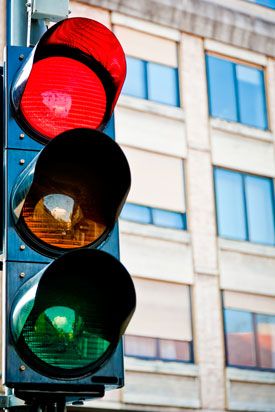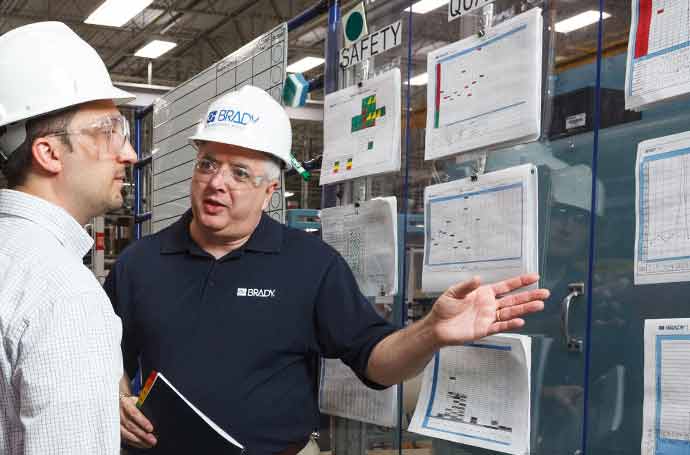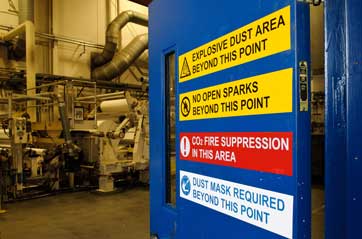Labels for Safety, Visuals and Facility ID Desktop Printers
Labels for Product, Wire and Lab ID Benchtop Printers
Labels for Safety, Visuals and Facility ID Desktop Printers
Labels for Product, Wire and Lab ID Benchtop Printers
Safety and Facility ID Desktop Printers
Product, Wire and Lab ID Benchtop Printers
Barcode Scanners and RFID Readers
PaintStripe Floor Marking Stencils
Valve Lockouts & Hose Lockouts
Group Lock Boxes & Permit Control
Brady Safety Lockout Tagout Services
Pipe Marker Accessories & Mounting Brackets
Maintenance and Production Tags
Calculators and Assessment Tools
Product Finders and Data Sheets
Whether you realize it or not, color affects your behavior every day. Simply stopping your vehicle when you see a red light is an example of how your brain responds to color cues. That’s because color, when used as part of a repetitive, standardized system, becomes a part of your automatic, intuitive response.
It’s scientifically proven. Numerous studies over the years illustrate the impact of color:

When we see a color, we react. Color can increase memory, engage and increase participation, and attract attention.
The use of color relies on the principle of cognitive consistency (humans seek consistency in beliefs and attitudes in any situation). Humans base their decisions on the outcome of past events, which is why you continue to make the quick decision to go when you see a green light. When there isn’t a consistency to follow, humans tend to feel more uncomfortable and take a longer time to make decisions, also known as cognitive dissonance.
It stands to reason that the more color and consistency is built into our worlds, the more efficient actions will become.
Using colored signs and labels can go a long way for your workplace and your employees. It can help improve:
Safety
A consistent color standard in your workplace helps employees quickly recognize and respond with the correct action. This is an essential element to establishing and maintaining a safe workplace. When an employee sees a red danger sign, for example, immediately they know to pay attention and take steps necessary to stay safe. Using safety signs with standardized colors helps to speed up recognition and response time to workplace hazards.
Productivity
Visual cues not only improve safety but help to improve productivity. That’s because using color-coding and effective labeling on inventory, processes and general facility identification can help reinforce employee training and guide workers to complete their tasks more quickly. In addition, safe state, equipment identification and safety signs all help to keep processes running smoothly so you have less downtime.
Cost Savings
When you are able to keep your workplace safer and more productive due to colorful and consistent workplace visuals, you end up saving time and money. That’s because training is reduced by visually reinforcing processes and steps, equipment is kept in proper working conditions and tasks are completed more safely and efficiently.
Now that you better understand the psychology behind color, you may be wondering what it means for your workplace. The use of color visuals in the workplace can make your workers more efficient and safer by:
While there are numerous ways color can be used effectively in the workplace, it’s most successful when combined with a visual workplace approach that uses consistent color standards and color coding to convey important information.

Learn more about one of the visual workplace in a lean manufacturing process.
Learn More
Take a look at some visual workplace examples in this FREE guide.
Download Now
Learn how color visuals can make your workplace safer.
Learn More